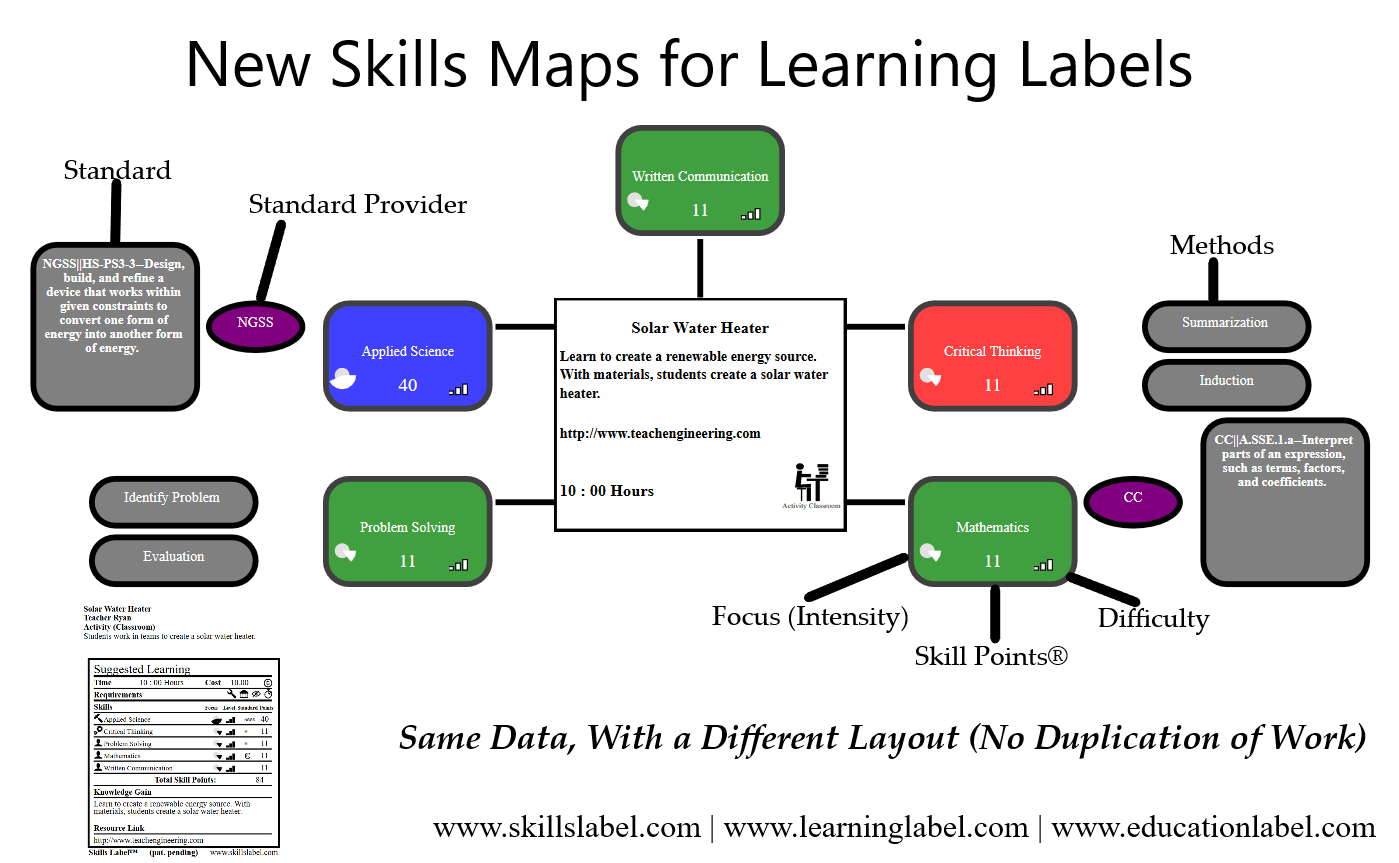My interpretation of a Skill Map is a graphical representation aligning skills to something – jobs, learning programs, etc. I worked with a few practitioners in a conference call where I got to hear their framework (for mapping skills to jobs). I suggested they use the learning labels technology, what I call the ‘wheel’ for mapping skills to learning.
I decided to create dynamic Skill Maps using the data collected on a learning label. There is no duplication of work for a practitioner creating a label. Simply click on a link on the main landing page of a learning label and the map appears.
Still bank heavily on learning labels as a standardized display for learning (analogous to a nutritional label or resume). The label is clear, concise, fits on any screen perfectly, ideal for making side by side comparisons, and something a child to an adult understands. In most cases, the best way to communicate learning expectations to a learner.
The primary advantage of a Skill Map is to evaluate the learning, useful to learning practitioners (not the learners). If I am a practitioner, I simply move through each end item (could be a skill, method, or standard) and make sure the expectation is met. This is much faster and easier to do with a Skill Map.
One case where a Skill Map is effective for a learner is reviewing it right before applying the skills in an experience. This graphical view is easier to process and remember. Standards might be cursory (for a learner), but the methods are important – particularly for general skills, like critical thinking and problem solving. This preparation for an experience plays nicely with the ethos of Skills Culture – “every experience is an opportunity to apply skills.”
See this less than 30 second video on how Skill Maps work.
